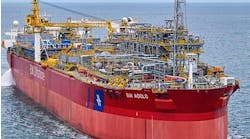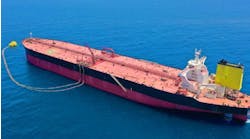Tracy Dulle, Technology Editor,
Surface & Vessels
HOUSTON -- ABS introduced its new Guide for Floating Production Installations during its ABS Offshore Structure Assessment Program seminar in Houston this week.
ABS will adopt new structural requirements for the analysis of FPSOs. The new requirements apply FPSO-specific loading conditions and prescribe strength assessment procedures to be followed.
"FPSOs have always been very unique structures," said Christina Wang, managing principal engineer, ABS Corporate Research & Product Development.
Continuing demand for single and double hull tanker conversions, specialized environmental loads and operational loading conditions, and the structural and loads interface between the much larger and heavier topsides production facilities and the hull were among the many issues that spurred the decision by ABS to re-evaluate the rules that specifically apply to FPSOs.
The new guide will require hull girder ultimate strength evaluation and finite element analysis as part of the tanker conversion to FPSO requirements to receive Class. Wang said her team of hydrodynamic and structural engineers has been working on criteria development and validation, addressing inspection and repair load cases, refining operational loading conditions, revising fatigue assessment to include low cycle fatigue, developing a new topside and hull interaction analysis procedure, and a new position mooring and hull interface analysis procedure.
The ABS Sea Environment Assessment System (SEAS) software has also been improved to better address the effects of environmental loads for the strength and fatigue assessment for FPSO conversions, taking into account the prior trading routes as a tanker and the site and transit conditions as an FPSO.
For conversions, the strength evaluation consists of evaluating the hull structure as a trading tanker prior to conversion, and then as an FPSO after conversion with topside loads and mooring system, explained Wang. This involves consideration of both the sea environment encountered as a trading tanker, the transit condition to the FPSO site location, and the sea environment at the FPSO site.
The loads encountered in FPSO operations include the variations in-tank loadings due to the many loading and offloading cycles, as well as the sea waves and swell. The wave and swell loadings subject the hull structure to high cycle fatigue loads, whereas the loading and unloading of the cargo tanks subject the structure to low cycle fatigue loads. FPSO operations are also different than those of tankers, as they are intended to operate at a specific site for a numbers of years without dry docking. Normal inspections and repairs are carried out at the operational site.
The new guide is going through the review process and will be released "soon," said Wang.
05/21/2008


